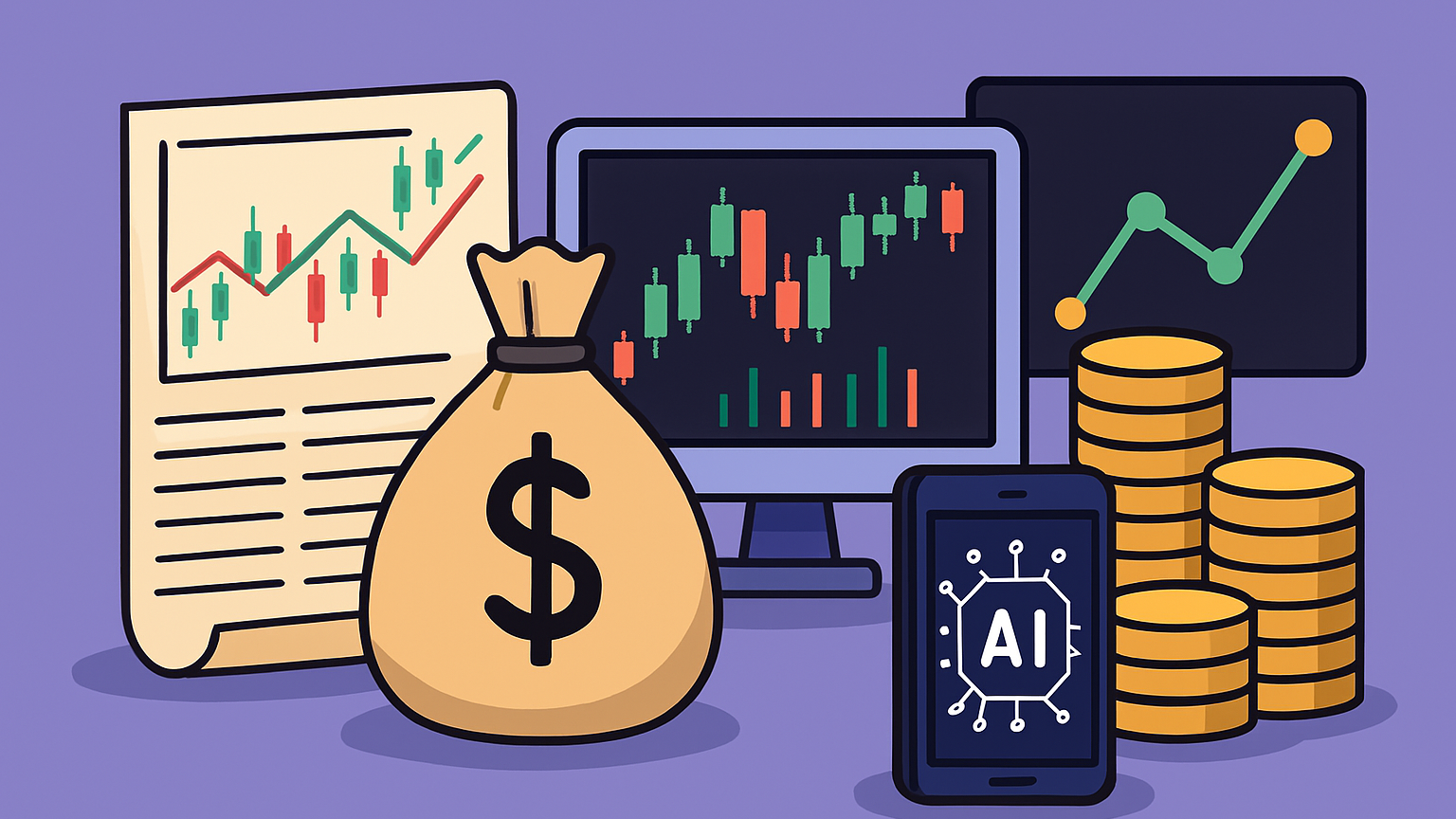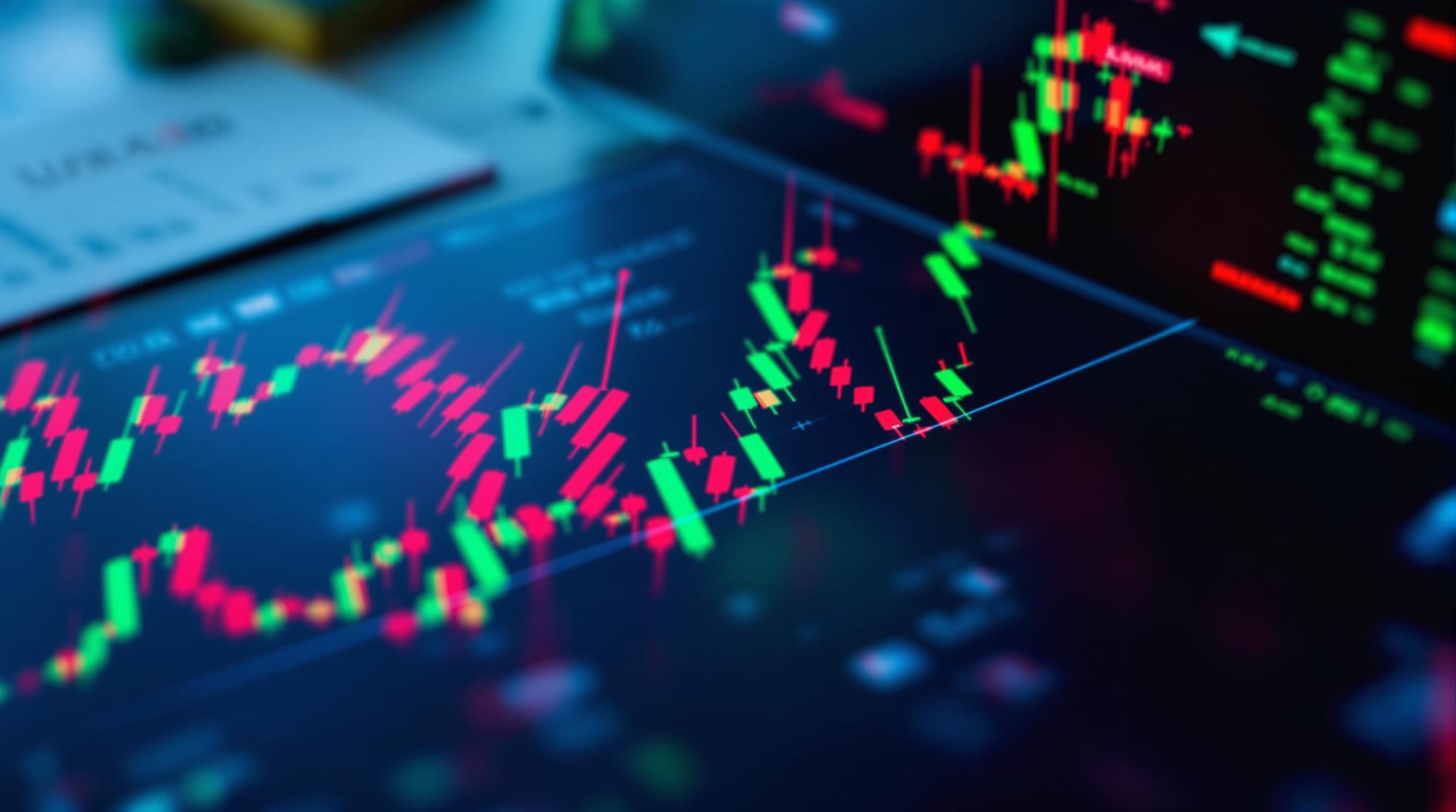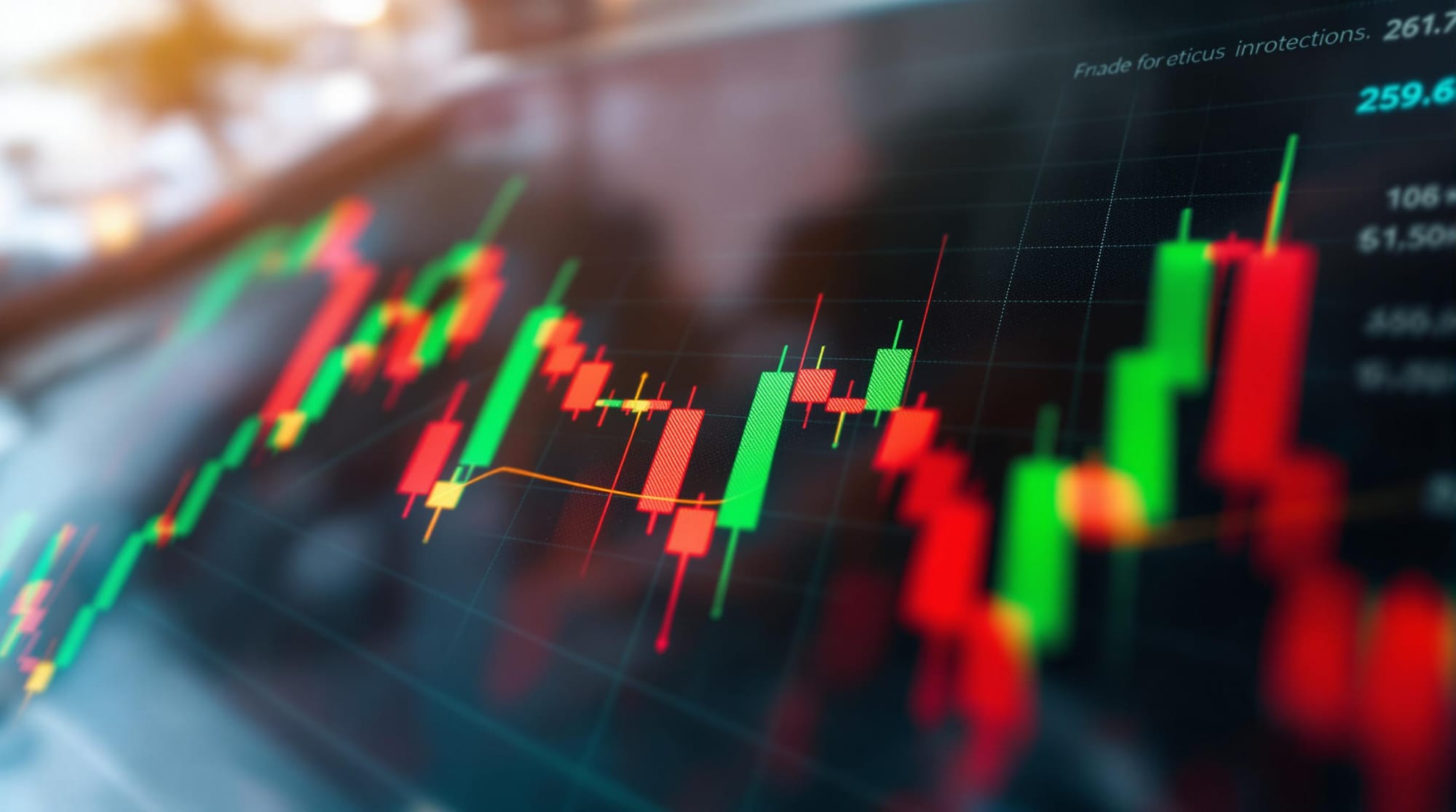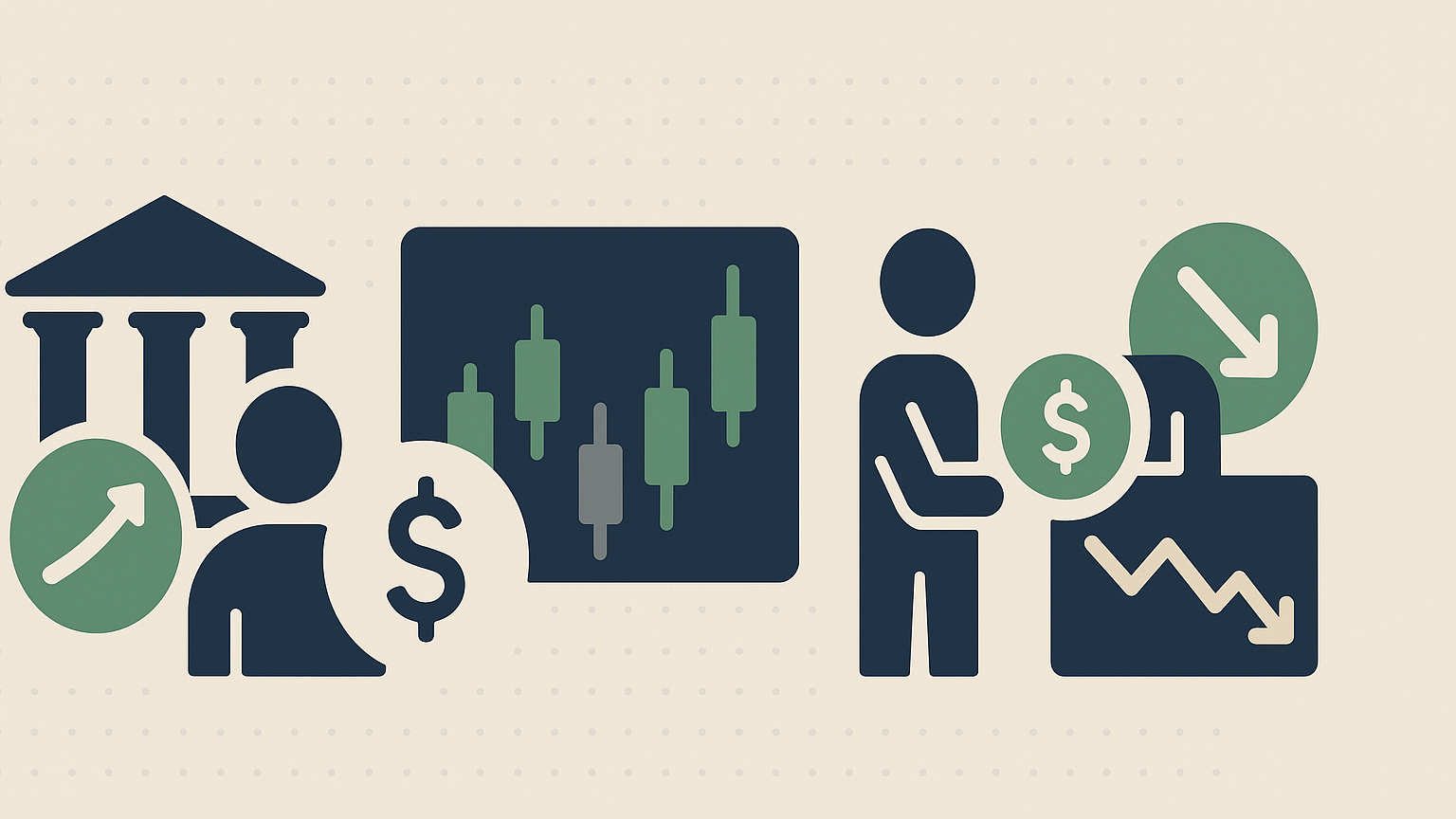Explore the world of proprietary trading, including strategies, career paths, tools, and the impact of technology on the industry.
Proprietary trading, or "prop trading", is when firms trade using their own money, taking on all the risks and keeping all profits. Unlike brokers or hedge funds, prop trading firms don't manage client funds but instead focus on maximizing returns through advanced strategies and tools.
Key Takeaways:
- What It Is: Firms trade stocks, bonds, commodities, or currencies with their own capital.
- Main Strategies: Arbitrage, market making, and statistical trading.
- Career Path: Start as a junior trader ($50K–$70K/year), progress to senior roles ($500K+ with profit-sharing).
- Tools Used: Platforms like MetaTrader 5, Bloomberg Terminal, and AI-driven systems.
- Risks/Rewards: High earning potential but requires strong risk management and emotional discipline.
Quick Comparison: Prop Trading vs. Other Models
| Trading Type | Capital Source | Risk Bearer | Profit Structure |
|---|---|---|---|
| Proprietary Trading | Firm's capital | Trading firm | Firm keeps all profits |
| Retail Trading | Individual's capital | Individual trader | Trader keeps profits minus fees |
| Hedge Funds | Client investments | Shared (fund/clients) | Fees include performance & management |
Prop trading is evolving rapidly with AI, advanced tools, and new market trends, making it a lucrative yet challenging field for skilled traders.
Exploring Proprietary Trading: Comprehensive Guide
Core Operations
Excelling in proprietary trading requires mastering three key areas: managing money, employing effective trading strategies, and utilizing advanced technology systems.
Money Management Rules
In proprietary trading, strict money management is crucial for protecting capital and maximizing profits. A core principle is maintaining proper position sizing - typically keeping trade exposure below 10% of total capital - while reserving cash for future opportunities.
"A speculator should do everything in their power to stay in the trading game." - Jesse Livermore
Here are some key practices:
| Rule | Implementation | Purpose |
|---|---|---|
| Stop-Loss Orders | Define exit points based on account size and volatility | Limit potential losses |
| Position Scaling | Add to positions incrementally as prices move favorably | Improve the risk-to-reward ratio |
| Cash Reserves | Keep a portion of capital unused | Stay flexible for new opportunities |
| Profit Taking | Lock in a portion of large wins | Secure gains while allowing growth |
With these safeguards, traders can confidently explore different trading strategies without risking unnecessary losses.
Main Trading Methods
Proprietary trading firms use a variety of strategies across asset classes and timeframes. The industry, valued at $6.7 billion in 2020, is projected to grow at an annual rate of 4.2% through 2028.
Key strategies include:
-
Arbitrage Trading
- Merger arbitrage: Exploits price differences during mergers and acquisitions.
- Index arbitrage: Capitalizes on pricing gaps between index values across exchanges.
- Volatility arbitrage: Focuses on mispriced options based on volatility.
-
Market Making
Firms provide liquidity by continuously placing buy and sell orders, profiting from the bid-ask spread. This method relies heavily on advanced technology and real-time market analysis. -
Statistical Trading
This approach uses mathematical models and historical data to identify pricing inefficiencies and trading opportunities across multiple markets at once.
Trading Software and Systems
Executing these strategies effectively requires robust trading platforms and systems. Proprietary trading firms depend on integrated solutions for trade execution, market data analysis, and risk management.
Popular tools include:
- Trade Execution: Platforms like MetaTrader 5 and NinjaTrader support multi-asset trading and automation.
- Market Data: Solutions such as Bloomberg Terminal and Reuters Eikon deliver real-time data and analytics.
- Risk Management: Systems like Match-Trader and DXtrade monitor positions and manage exposure effectively.
For example, Match-Trader can handle up to 200,000 accounts simultaneously without performance issues. By combining these tools, firms can execute complex strategies while maintaining strict control over risks.
Starting as a Prop Trader
Once you've built a solid foundation in trading fundamentals, it's time to kick off your career in proprietary trading.
Breaking into this field requires a mix of technical skills, perseverance, and a well-thought-out approach.
Key Skills You’ll Need
Prop traders rely on a specific set of skills to succeed. These include strong math abilities, market analysis expertise, emotional discipline, and risk management. Here's a breakdown:
| Core Skill | Description | Importance |
|---|---|---|
| Analytical Thinking | Interpreting data and spotting patterns | Helps uncover trading opportunities |
| Risk Management | Managing position sizes and limiting losses | Protects your capital |
| Technical Proficiency | Knowledge of programming and trading tools | Enables complex strategy execution |
| Emotional Control | Staying calm under pressure | Avoids rash decisions during trading |
How to Get Hired
To secure a role in prop trading, you'll need a combination of academic achievements and hands-on trading experience. Typical requirements include:
- Education: Degrees in math, physics, statistics, or computer science from prestigious institutions.
- Technical Tests: Mental math challenges and probability-based questions.
- Trading Expertise: Familiarity with financial instruments and how markets operate.
- Starting Compensation: Junior traders often earn between $100K and $200K USD in total compensation.
Landing your first role is just the beginning, setting the stage for rapid career advancement.
Career Progression
In prop trading, your growth depends on your performance and ability to sharpen your skills continuously. Here's what the career path typically looks like:
- Junior Trader: Base salary ranges from $50K to $70K. You'll focus on learning the firm's strategies while working closely with senior traders.
- Senior Trader: Potential earnings can reach $500K–$1M. At this stage, you'll have more autonomy and take charge of developing trading strategies.
- Partner/Portfolio Manager: Earnings exceed $1M, with profit-sharing opportunities and leadership responsibilities.
Many traders enhance their expertise by earning certifications like the Series 7, Series 56, CFA, or FRM. Staying informed is key - successful traders often take specialized courses, attend industry events, and keep up with the latest market trends and tools.
Pros and Cons
Proprietary trading comes with its own set of perks and challenges, making it essential for traders to weigh these factors before diving in.
Key Benefits
Prop trading stands out from traditional commission-based trading by offering traders the chance to earn the full value of their successful trades. Here are some of its standout advantages:
| Aspect | Benefit | Impact |
|---|---|---|
| Capital Access | Firm-provided trading capital | Reduces personal financial exposure |
| Profit Sharing | Industry average 80/20 split | Greater earnings potential |
| Resources | Advanced tools and technology | Boosts trading efficiency and accuracy |
| Development | Training and mentorship | Speeds up career progression |
Main Risks
While about 73% of prop trading firms expected strong opportunities in 2023, only 18% were confident in seizing them. Here are some of the risks traders face:
- Financial Risks: Includes dealing with market volatility, counterparty credit risks, and liquidity issues during market stress.
- Operational Challenges: Traders must navigate high-pressure environments, manage complex compliance requirements, and rely on technical systems that could fail.
Rules and Standards
Risk management in prop trading hinges on strict adherence to regulations. For instance, the Volcker Rule limits banks from short-term proprietary trading to safeguard customer interests. To stay compliant, firms often follow these practices:
- Separating proprietary trading from client-focused activities.
- Ensuring adequate capital reserves.
- Using detailed risk management strategies.
- Regularly reporting to regulators and maintaining oversight.
Firms that succeed in this space back these measures with strong internal controls and ongoing compliance training. For individual traders, understanding these frameworks is essential, especially given the $7.5 trillion daily forex market in 2022.
What's Next in Prop Trading
AI and New Tech
Artificial intelligence is reshaping proprietary trading, transforming how firms operate. Since 2020, more than half of algorithmic trading patent applications have included AI, a steep rise from 19% in 2017. Top firms are already demonstrating the power of AI in trading:
| AI Application | Implementation Example | Impact |
|---|---|---|
| Pattern Recognition | Renaissance Technologies' models | Improved forecasting and automated execution |
| Risk Assessment | Citadel Securities' real-time tools | Quick strategy adjustments based on markets |
| News Analysis | Bloomberg's analytics platform | Instant evaluation of news affecting markets |
| Compliance | JPMorgan Chase's monitoring system | Automated checks for regulatory compliance |
LuxAlgo’s AI Backtesting platform is another example of how AI is advancing trading. It helps traders fine-tune strategies and analyze markets in real time across different timeframes. These developments are setting the stage for a more tech-driven trading world.
Market Changes
The world of proprietary trading is undergoing major structural changes.
"I believe these elements collectively signal a shift toward a more inclusive, technologically advanced and secure trading environment. This offers both challenges and opportunities for industry leaders." - Blake Olson, CEO of Smart Prop Trader
Modern firms are embracing new approaches, such as:
- Democratized Access: Companies like OneUp Trader and Smart Prop Trader offer simulated environments to help traders hone their skills.
- Educational Integration: SMB Capital provides extensive training options, including webinars and tutorials.
- Social Trading: Platforms like eToro allow users to replicate strategies and learn from a community.
These trends are steering the industry toward a future driven by data and collaboration.
Future Outlook
In the next three to five years, AI will continue to drive trading automation, but human oversight will remain essential. As technology and market practices evolve, several key trends are emerging:
1. Automated Trading Growth
AI-powered ETFs are making moves faster than traditional funds, with monthly portfolio updates compared to the annual changes seen in conventional ETFs.
2. Shifting Market Structures
More investment activity is expected to flow to prop trading firms and hedge funds, potentially making markets less transparent and harder to regulate.
3. Regulatory Changes
European regulators are drafting new rules for prop trading firms, which may include stricter requirements under MiFID for Dealing on Own Account.
The future of prop trading is heading toward greater automation and reliance on data. Firms will need to navigate technological advancements while keeping up with regulatory demands and managing risks effectively.
Summary
Main Points Review
Proprietary trading was valued at $6.7 billion in 2020 and is expected to grow to $9 billion by 2028. To succeed in this field, traders need to focus on several critical components:
| Component | Key Requirements | Impact |
|---|---|---|
| Strategy | Align trading style with risk tolerance | Ensures consistent performance |
| Skills | Strong knowledge in math, finance, and technical analysis | Leads to career growth |
| Risk Management | Use tools like stop-loss orders, position sizing, and hedging | Protects trading capital |
| Technology | Leverage advanced platforms and analysis software | Provides an edge over competitors |
Compensation in proprietary trading is performance-driven. Entry-level traders typically earn between $50,000 and $70,000 annually, while experienced traders can surpass $200,000 per year. Senior-level professionals, especially those in leadership roles, often earn over $500,000 annually. These elements are essential for building a successful career in prop trading.
Getting Started Steps
If you're looking to break into proprietary trading, here are the key steps to prepare:
-
Educational Foundation
Gain a solid background in fields like finance, economics, or mathematics. Certifications such as Series 7, Series 56, or CFA can also enhance your credentials. -
Practical Experience
Use demo accounts to test your strategies without financial risk. Many funded trading programs require challenge fees, which typically range from $100 to $500. -
Professional Development
Build technical and soft skills that are crucial for success:- Learn technical analysis tools and market indicators
- Understand the basics of fundamental analysis
- Strengthen emotional discipline to handle market volatility
-
Career Entry
Start with entry-level roles like trading assistant or junior trader. Many firms offer training programs that blend theoretical knowledge with hands-on experience, helping you advance to managing larger portfolios.







